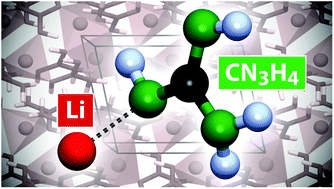Abstract
A family of alkali-metal guanidinates (M = Na–Cs) has been reported recently, representing all-

* Corresponding authors
a Institute of Inorganic Chemistry, RWTH Aachen University, Landoltweg 1, 52056 Aachen, Germany
b
Jülich–Aachen Research Alliance (JARA-HPC), 52056 Aachen, Germany
E-mail:
drons@HAL9000.ac.rwth-aachen.de
Fax: +49 241 8092642
A family of alkali-metal guanidinates (M = Na–Cs) has been reported recently, representing all-

 Please wait while we load your content...
Something went wrong. Try again?
Please wait while we load your content...
Something went wrong. Try again?
P. K. Sawinski, V. L. Deringer and R. Dronskowski, Dalton Trans., 2013, 42, 15080 DOI: 10.1039/C3DT51820E
To request permission to reproduce material from this article, please go to the Copyright Clearance Center request page.
If you are an author contributing to an RSC publication, you do not need to request permission provided correct acknowledgement is given.
If you are the author of this article, you do not need to request permission to reproduce figures and diagrams provided correct acknowledgement is given. If you want to reproduce the whole article in a third-party publication (excluding your thesis/dissertation for which permission is not required) please go to the Copyright Clearance Center request page.
Read more about how to correctly acknowledge RSC content.
 Fetching data from CrossRef.
Fetching data from CrossRef.
This may take some time to load.
Loading related content
